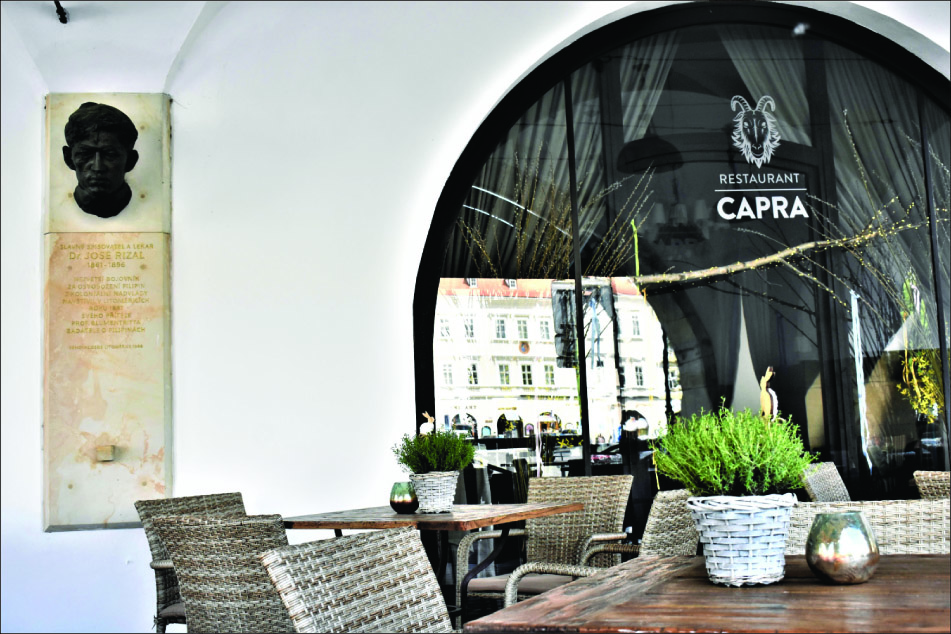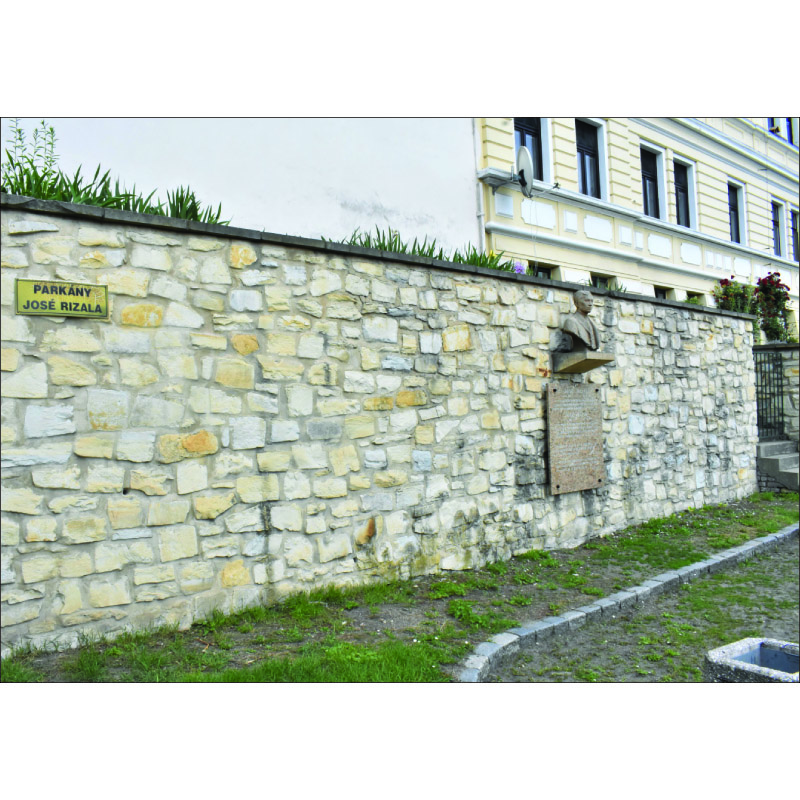
Jose Rizal, our national hero, lived in the 19th century. A man for all seasons, he traveled far and wide, and while in Europe, wrote his greatest novels which exposed the ills of Philippine society and Spanish colonialism. The novels Noli Me Tangere and El Filibusterismo live in the annals of Philippine history for all generations.
Fast forward to the 21st century. My husband, Mario, a University of the Philippines professor, has been dreaming of finding Jose Rizal in Europe. For more than two decades, he fervently taught the Rizal course required by law of every graduating college student, even as he taught graduate courses at the UP Asian Center. He told me that if we ever traveled to Europe again, he wanted to follow the route taken by our national hero.
That would be daunting, I thought! Just consider: from the correspondence between Rizal and his bosom friend, the Austrian Ferdinand Blumentritt, which covered 10 years of Rizal’s life, the addresses gathered from the letters Rizal sent to his friend in Leitmeritz (now Litomerice, and part of the Czech Republic) are Heidelberg, Leipzig, Berlin, Brunn, Vienna, Salzburg, Munich, Stuttgart, Basel, Geneva, Rome, Marseille, London, Paris, Brussels and Gand/Ghent. And added, of course, Madrid and Barcelona.
Eventually, we settled for Madrid and Barcelona, as well as a side trip to (distant) Litomerice in Prague that turned out to be the high point of our trip as it was exciting, albeit exhausting, for senior citizens like us.
Long flight
We were supposed to just fly straight to Prague from Manila, with stop-overs in Abu Dhabi and Barcelona on May 21. We were all buckled-up inside the plane at NAIA when it was announced that a thunderstorm was preventing our plane from taking off. We waited for three hours before the plane was allowed to fly. We were traveling as a family with our daughter Banaue, her husband Dominic, and grandson Raj.
As a result, our Manila-Abu Dhabi-Barcelona-Prague 24-hour flight became a Manila-Abu Dhabi-Frankfurt-Barcelona-overnight at Barcelona airport- Vaclav Havel Airport, Prague 50-hour flight. We lost a full day in our schedule with our hotel already fully paid.
Happily, “the ancient and legendary Prague, the city of one hundred high towers” mentioned by Rizal as the birthplace of his friend Blumentritt, was like an oasis with fresh carpets of green as far as the eye could see as we landed. It was a welcoming sight, and we couldn’t wait to see the Old Town Square, New Town, the Prague Castle and, of course, Litomerice!

Auspicious meeting
Rizal arrived in Leitmeritz (Litomerice) on May 13, 1887, together with his friend, Maximo Viola. It was the first time he met his pen pal Blumentritt, a professor at the Municipal Atheneum of Leitmeritz, scholar, polyglot and author of articles and books on the Philippines. Their correspondence started on July 31, 1886, when Rizal heard that Blumentritt was studying Tagalog. He wrote him a letter in German and sent him a copy of Rufino Baltazar Hernandez’s Aritmetica written in Tagalog and Spanish.
The correspondence of more than 200 letters lasted 10 years. They covered scholastic and intellectual exchanges on their writings and common interests on ethnography, linguistics, mathematics, the sciences, and politics. Blumentritt wrote articles for La Solidaridad, and in one letter to him, Rizal wrote: “I have read your article. It is very good. Plaridel and Ponce wrote me that your name is the greatest honor for the periodical. But I say that your teachings are even better than your name for you teach so much.”

While other Filipino exiles like Juan Luna, Marcelo H. del Pilar and Pardo de Tavera became friends with Blumentritt, the latter introduced Rizal to other eminent European scholars and Orientalists.
Our hero highly valued the opinion of his bosom friend and asked him to write a prologue to his Annotations to Antonio Morga’s Sucesos De Las Islas Filipinas (a 16th century Spanish account about the Philippines). Upon receipt of the finished book, Blumentritt said, “This edition with your erudite notes will glorify your name.” In another letter, he wrote, “Your Filipinas dentro de cien años (The Philippines a century hence) has had a great effect. In general terms, the liberal group in Spain now looks with wholly different eyes at the Philippines.”
He was also all praises for Noli Me Tangere, which he started to translate into German. His verdict on El Filibusterismo greatly pleased Rizal that he wrote to him that he’s thinking of writing his third novel, “a novel in the modern meaning of the word.”
Intimate friendship
Rizal sent Blumentritt his sketches of him and his own portrait and two sculptures “both original, no copies of them exist.” The grateful professor thanked him profusely, saying, “We all like it very much… You are indeed a man favored by God whose brow has been kissed by the genius of the noble and sublime.”
Their friendship extended to their families, with intimate news about each other, both happy and sad. “The Spanish regime deported my brother-in-law (Manuel Hidalgo) just for being my brother-in-law,” wrote Rizal.
He added, they “deprived my four brothers-in-law and my brother of their lands despite the fact that they had paid their tributes.”
He intimated to his dear friend the death of his sister Olympia, and even his lament about losing everything, including his fiancée, “who was faithful to me for more than 11 years, is going to marry an Englishman, an engineer of the railroad. When I received the news, I thought I’d lose my mind.”
Train to Litomerice
We had to split places to visit to make up for the time we lost on the first leg of our trip, with Mario and I heading for Litomerice, 64 kilometers northwest of Prague. Banaue and family went to see places of interest for Raj, after accompanying us to the train station.
From Praha (Praga/Prague) station, we had to get off at the town of Kolin, and transfer to another line to Litomerice. But the train from Praha was delayed for 10 minutes, leaving us only four minutes to transfer to another platform.
Mario’s heart condition prevented him from walking fast, let alone run, so I left him in a basement corner to see the announcement on the electronic board by the entrance of the station several staircases away. We had missed our train.
When the next train arrived, I asked, “Litomerice?” the dispatcher quickly issued me a new ticket. But when I turned back to fetch my husband, the train left.
A lady dispatcher, who spoke a bit of English, told me there would be another train to Litomerice at 2 p.m., or three hours later. She pointed to the new Futurum Mall a kilometer or so away, with toilets and restaurants that the station didn’t have.

The shopping mall’s size reminded my husband of the former Good Earth Emporium at Rizal Avenue in Manila. While waiting for me to buy take-out sandwiches, he took pictures of the mall. A man in uniform saw him and asked him to delete each and every photo.
“Be that as it may,” he told me later, “it was only a generation ago that the Soviet Union invaded the former Czechoslovakia, and not everyone has caught up with democratic ways.”
Pilgrims’ progress
At long last, we made it to our final stop: the Litomerice Mesto station!
Our next hurdle was how to get to Rizal. A lady at the bus ticket booth lighted up when we mentioned Jose Rizal! She gave us a map of the city and penciled the route to get there.
We, two not so young Rizal pilgrims, walked through the beautiful town and its spic and span, tree-lined main street of cobblestone. We asked a storeowner the way. Following his instructions, we were overjoyed to see a hero’s bust. It turned out to be a monument to Karel Hynek Macha, a Czech romantic poet. We thought the people we asked mistook the poet’s monument as Rizal’s. Back to the main street and the town square, we decided to just go to the museum. There could be some Rizal relic there.
Two museum keepers who spoke only Czech and German led us to a room. I thought, “A Rizal relic, at last!”
Instead, they directed us to a room and opened the window, pointing to us the same road we took earlier. It turned out that the Hynek monument was not the end of the road. To the left or right of the monument is the entrance to the winding Jose Rizal Road, with steps going up and down. We saw a group of tourists brought there to view the elegant houses and their beautiful gardens.

Rizal bust
Taking the left strip of the road, one immediately saw the sign Parkany Jose Rizala, and a little farther down, Rizal’s bust!
I’ve been to London, Greenwich, Paris, Berlin and Potsdam. Wonderful cities! But the feeling I got in this quaint little town of Litomerice was more than overwhelming. Mario swears his visit long ago to other small European towns like Vlora, Djirokastre, Sarande and Korce in Schiperia (Albania) paled to his being here.
In this corner of a hillslope of Litomerice, Rizal’s bust watches over lovely villas with their manicured orchards and flower gardens. Two rows of grape vines were growing along a shallow cliff.
To the back of our hero’s bust stood a high wall of gracious apartments. A window opened and a lady perched, holding a flowerpot. She waved and smiled at us.
My husband tarried a bit taking pictures, while I walked up and down the street. It was exhilarating! The ladies at the museum also showed us the direction towards “eine kleine” park which displayed a bust of Rizal’s bosom friend, Dr. Ferdinand Blumentritt.
We went to the nearest restaurant, named Capra, for some refreshments. We took the veranda-like section, the interior classier section being partly closed for some private gathering. As we sat on a corner, we noticed an interesting bust hanging by the wall of the main door. Lo and behold, it was Rizal!
I swear it was a dramatic image of our hero, if the one in the park was heroic. I left Mario there and walked towards Blumentritt’s own little park by crossing the main avenue to get to the town square and following a narrow street leading to a road parallel to Rizal Street. Sounds complicated, but it was really, pardon the pun, a walk in the park. There were little shops and an ice cream booth to boot.
Blumentritt Park was a patch of green surrounded by old trees. I espied a woman completely absorbed in a book in one of two benches there, an apt tribute to the scholar who, like Rizal, was a Renaissance man.
The night before his execution, Rizal wrote his very last letter and it was to his “dear Brother,” Blumentritt.
It read: “When you receive this letter, I shall be dead by then. Tomorrow at seven I shall be shot… I die with a tranquil conscience./ Adieu, my best, my dearest friend… Fort Santiago, 29 December 1896 / Jose Rizal / Regards to the whole family… / I leave a book for you as my remembrance.”
After Litomerice, our family flew to Spain to try to find Rizal in various streets of Madrid. But that is another story.
(The Rizal-Blumentritt Correspondence in English translation with extant facsimiles of Rizal’s letters are in two volumes, re-published in 1992 by the Jose Rizal National Centennial Commission and the National Historical Institute.)
